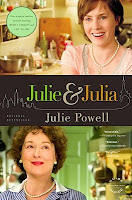If you’re interested in joining any or all of LPL’s book discussion groups, check out the previous post, How Do I Get a Copy of a Book Club Title? : http://lplbookgroups.blogspot.com/2009/09/how-do-i-get-copy-of-book-club-title.html.
LPL’s Book Discussion Groups on Goodreads
If you can’t make it to our book discussion meetings, try us online at Goodreads:
- http://www.goodreads.com/group/show/38326.Book_Sandwiched_In_Books
- http://www.goodreads.com/group/show/49408.Discussions_at_the_E
Free Audiobook and e-Book Downloads
Check out the many downloadable audiobook and e-book titles Lakeland Public Library offers for library card holders: http://www.lakelandgov.net/library/Services/OnlineResources/eBookseAudioeVideo.aspx.
LPL also has free e-book downloads for Kindle users with a library card. Instructions on how to download to your Kindle can be found here: http://www.lakelandgov.net/Portals/Library/Downloading%20eBooks%20to%20a%20Kindle%2010-11.pdf.
All library cards are free--if you live within Polk County. If you don’t have a library card, detailed information on how to get your free card can be found on our website: http://www.lakelandgov.net/library/Home/LibraryCards.aspx.
- http://www.feedbooks.com/publicdomain
- http://www.librivox.com/
- http://www.gutenberg.org/catalog/ http://m.gutenberg.org/ (for mobile users)
- http://www.gutenberg.org/wiki/Gutenberg:The_Audio_Books_Project
- http://www.freekindlebooks.org/MagicCatalog/magiccatalog.html
If you have no clue about e-books and/or e-readers, Manatee Public Library System offers a cheat sheet on e-books and e-readers:
https://secure.soita.org/docs/eReader%20Overview%2012%2014%202010.pdf. 













